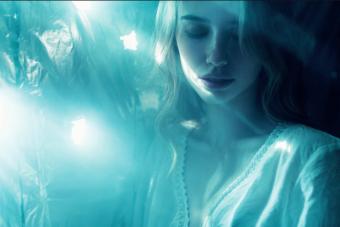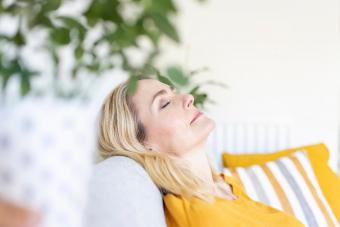
Muscle spasm during sleep may be a symptom of a sleep disorder, such as restless leg syndrome, or RLS. It may also be a symptom of periodic limb movement disorder, or PLMD. Although both are different disorders, both are parasomnia conditions, which often occur at the same time.
Understanding Muscle Spasm During Sleep
Many times, muscle spasms during sleep are nothing more than an individual moving or dreaming. However, those who have this type of spasm frequently may have PLMD or RLS. This condition is nocturnal myoclonus. This simply means that the muscle spasms are involuntary and occur frequently.
Periodic Limb Movement Disorder
Periodic limb movement occurs while a person sleeps. Individuals often experience a shallow, continual movement that occurs mainly in the ankle or the toes. It may intensify to wild kicking and flailing of the arms and legs. Some patients also have oral, nasal and abdominal movement when they have PLMD. It is more common to have muscle spasms in the legs than the arms. The movement may last from a half of a second to as long as 10 seconds.
- Movements can occur at intervals of five to 90 seconds, repetitively throughout sleep.
- Any repetitive, involuntary movement during sleep may be PLMD.
- Most movements happen during stage two sleep. They do wake the individual up.
- An important symptom in the diagnosis of this condition is poor sleep quality. Many have excessive daytime sleepiness and sleep maintenance insomnia.
- Most people with PLMD are older, though it may occur in anyone.
Restless Leg Syndrome
A second type of disorder that may cause muscle spasms during sleep is restless leg syndrome. Although there is written history of RLS occurring in people well back into the 16th century, it was not fully diagnosed until the 1940s. The key characteristic of this sleep disorder is the irresistible urge to move the legs while the legs are at rest. Those with RLS have a vague and uncomfortable feeling within their legs that they cannot alleviate until they move their legs. Unlike PLMD, RLS may exhibit symptoms during the day. For some, the symptoms occur only in the evening hours.
- Those with RLS may suffer from sleep onset insomnia, as falling asleep may be too difficult.
- Sitting motionless is difficult for those with RLS.
- RLS may occur in anyone. Some health situations, such as post surgical procedures, uremia and pregnancy, will increase the incidence of RLS.
- Fevers seem to reduce the symptoms of RLS, though researchers are not fully sure why this occurs.
- Incidence of RLS increases as a person ages, though one study found that it is most prevalent in middle-aged females.
- Of those who have RLS, about 80 percent also have PLMD.
- Most people who have PLMD do not have RLS.
Causes of Muscle Spasms
The cause of PLMD and RLS are unknown. Most cases do not occur alongside other disease or illness. Some studies show that sleep disturbances may lead to the development of the condition. However, sleep apnea patients are not more likely to have the condition as others are. Conditions such as chronic renal failure, diabetes mellitus, anemia, iron deficiency and amyloidosis are associated with PLMD and RLS, though doctors are unsure what the connection is. Withdrawal from some medications including barbiturates and anticonvulsants may induce RLS and PLMD.
Treatment of Muscle Spasms
Those who believe they may suffer from these types of muscle spasms during sleep and during the day should report them to their doctor. There is help. Doctors may use a sleep study to identify the problem and to offer a full treatment plan.
Three types of drugs are available for treatment of both PLMD and RLS, although there is no cure for this condition. Parkinson drugs, narcotics and benzodiazepines are available for treatment. With these medications, the symptoms of muscle spasms do decrease substantially, in most people. In many cases, treatment does eliminate the symptoms.
These medications include clonazepam, L-dopa/carbidopa, pergolide, selegiline and hydrochloride. The most well known hydrochloride is the brand name Requip, which received approval by the FDA to treat RLS in 2005.







